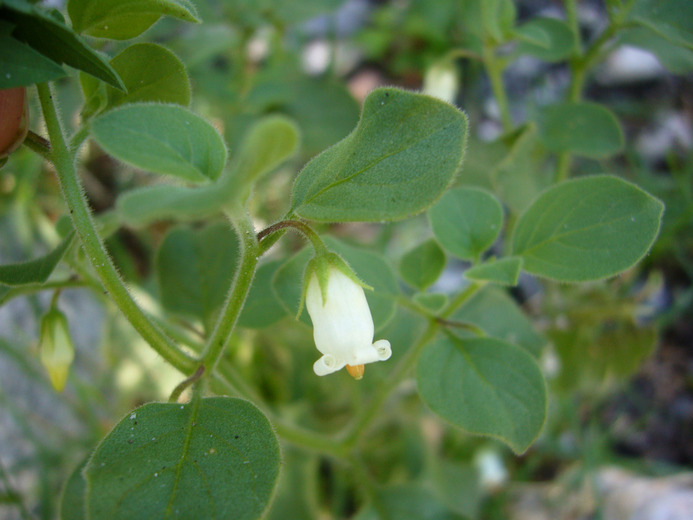Created on: Thursday, Apr 14th, 2016
Reviewed by Gina Darin (Gina.Darin@water.ca.gov, CA Dept of Water Resources) and Ron Vanderhoff (rvanderhoff@sbcglobal.net, CA Native Plant Society- Orange
Co. Chapter).
The following webpages were consulted for this screen: Tropicos: http://www.tropicos.org/Name/29604942; GBIF: http://www.gbif.org/species/2928796; ARS GRIN: https://npgsweb.ars-grin.gov/gringlobal/taxonomydetail.aspx?102338; Calflora: http://www.calflora.org/cgi-bin/species_query.cgi?where-calrecnum=7292; USDA-NRCS: http://plants.usda.gov/core/profile?symbol=SAOR4; Jepson: http://herbaria4.herb.berkeley.edu/eflora_display.php?tid=43020; Natural History: http://nathistoc.bio.uci.edu/plants/Solanaceae/Salpichroa%20origanifolia... Boroonda City of Harmony: https://www.boroondara.vic.gov.au/-/media/Files/Imported/W/Weeds%20Broch... spread by seed Weeds of Australia: https://www.boroondara.vic.gov.au/-/media/Files/Imported/W/Weeds%20Broch... {VRO} - Impact Assessment - Pampas lily-of-the-valley (Salpichroa origanifolia) in Victoria (Nox): http://vro.agriculture.vic.gov.au/dpi/vro/vrosite.nsf/pages/impact_pampa... CABI: http://www.cabi.org/isc/datasheet/116862; Wikipedia: https://en.wikipedia.org/wiki/Salpichroa_origanifolia; Dave’s Garden: http://davesgarden.com/guides/pf/go/127561/; Tasmanian Govt Invasive Species: http://dpipwe.tas.gov.au/invasive-species/weeds/weeds-index/weeds-index-... PAMPAS LILY OF THE VALLEY Fact Sheet: https://www.google.com/url?sa=t&rct=j&q=&esrc=s&source=web&cd=9&cad=rja&... Herbiguide: http://www.herbiguide.com.au/Descriptions/hg_Pampas_LilyoftheValley.htm; Invasive Species in Botanical Garden of Ajuda (Portugal): http://www.bgci.org/congress/congress_eurogard2006/invasive_garden_AJUDA...
- < 13 : accept (low risk of invasiveness)
- 13 - 15 : evaluate further
- > 15 : reject (high risk of invasiveness)

